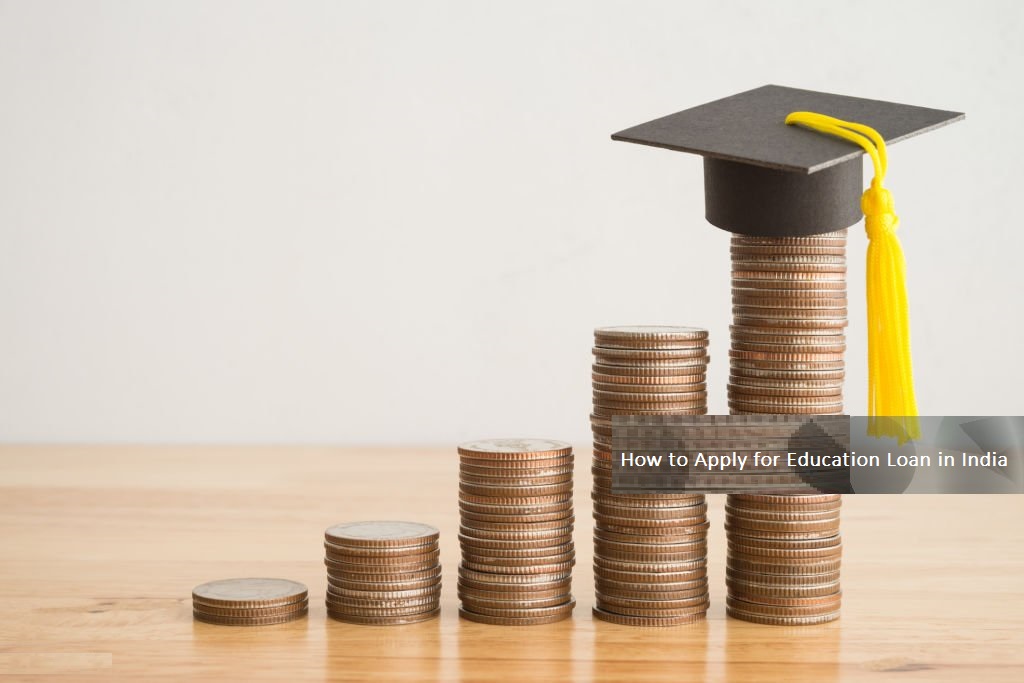Education is necessary to live a happy and wealthy life. However, the rising cost of education has emerged as a major obstacle particularly for middle class. Attending reputable colleges requires substantial financial resources, even for brilliant and capable students.
Recently, many parents find it challenging to afford such education for their children. Those deeply committed to offering their children the best education often resort to long-term investments. However, despite these attempts, financial difficulties may still occur. Under these conditions, getting an education loan in India is essential. Education loan by government of India have helped students overcome financial hardships and pursue their academic goals by providing a lifeline.
Students and their families may find applying for an education loan daunting because it takes time and work. The procedure has been significantly streamlined over time to the comfort and ease of borrowers and their families. Here you can see the steps to apply for an education loan:
Know the education cost and loan amount
Start by calculating the total expenses you anticipate spending on your studies. Tuition, books, lodging, meals, travel are all included in this price. The university website and the student office make it easy to find this information.
Your admission offer letter may include the amount you must dispense for your course each year or semester. You can determine how much you need to borrow for school after you know the whole cost of your education.
Also, check the education loan eligibility criteria, ensuring a smooth application process and approval without complications.
Also Read: Top investors in Indian stock market
Compare Education Loans from different lenders
After figuring out how much you want to borrow, the following step is to choose the best lender. Education loans are offered to students studying locally and abroad by many banks and financial institutions in India.
Speak with them about your needs and ask about their educational loan options. SBI education loan offer doorstep assistance and personalised education loans, streamlining the entire procedure.
Based on your circumstances and considerations, such as interest rate, processing cost, income tax advantages, collateral, margin funds, disbursement and repayment conditions, etc., it is recommended that you make your choice.

Required documents
After finalising the lenders, it is essential to have some documents to apply for an education loan in India. You usually need a few documents to apply for an education loan in India.
These consist of identification proof, proof of residency, admission letters from the school, fee schedules, qualifying exam mark sheets, co-applicant proof of income, and collateral documents, if any.
Banks may also ask for photo, PAN card information, and a statement of the borrower’s bank account for the previous six months. Certain documents must be prepared and arranged for the loan application procedure in India to go smoothly and effectively.
Also Read: How To Deposit Money In SBI ATM Along With The Other Features Of ATM
Applying for a Loan
After collecting the required papers, you must complete aloan process. Students can apply for loans online with most lenders. It is advisable to complete these documents accurately, as errors could be interpreted as deliberate data manipulation, resulting in loan rejection.
The loan application form asks about the academic background of student, the type of course they are applying for, their family’s income, the earnings of their coborrowers, and their credit history.
Even government is taking some measures to help the students. With the help of education loans by the Government of India, students can get financial support to pursue higher education at reputed institutions.
Reading and Signing the Loan Document
Loan paperwork describing the terms and conditions of the education loan and its numerous components will be issued by the lending bank or financial institution once your loan has been approved.
The loan amount that has been approved after the reviewing the profiles of the student. This contains details about the interest rate, loan tenure, length of moratorium, amount due, number of EMIs, and terms of repayment.
Before signing this contract, it is advised to carefully read the contract and get any questions or concerns answered.
Also Read: How to earn money online without investment in mobile
Disbursement and Repayment
After you sign the loan agreement, the bank pays the relevant educational institution directly by the agreed-upon fee schedule. The loan sanction letter can also be used as evidence of money when applying for a student visa and admission to universities abroad.
Banks pay for foreign schooling in the currency of the recipient nation and may impose a remittance fee on you.
The payback process starts after the moratorium period, which varies depending on the bank and can last anywhere from six months to a year following the course’s completion. Repayments are done in instalments, or EMIs, and consist of a portion of the principal plus interest.
Final thoughts
Education loan are an important financial tool for students in India who want financial aid to pursue higher education. Are you wondering if there is any special education for girl gender? Education loan for girl students in India often comes with special benefits, including lower interest rates and flexible repayment options, making higher education more accessible and affordable for young women. Students must also investigate, evaluate, and select a lender with advantageous terms and interest rates among several loan possibilities.
Also Read: Why are demand deposits considered as money?
FAQs
1. Who Is Eligible To Apply In India For An Education Loan?
One of the main borrowers is a student. A parent or spouse may also be an applicant’s co-applicant.
2. Will repaying my student debt early result in penalties?
Banks have different policies regarding prepayment penalties. Usually, banks do not punish borrowers for early repayment.
3. Does an education loan have any tax benefits?
Under the Income Tax Act’s section 80E, you will receive tax benefits on the interest paid on student loans, with principal amount deductions available.
4. Is it possible to extend the loan repayment period if necessary?
Yes, certain banks let borrowers modify the monthly instalments on their financial circumstances by extending the repayment period. There could be additional interest charges associated with this extension.
5. How are educational loan interest rates calculated?
Interest rates may be fixed or variable, depending on the chosen bank or financial institution. Interest rates may vary based on the term of loan, applicant reliability, and loan amount.
More Articles: How to invest in startups in India
How to start sip: A Complete Guide
5 Best Steps of Investment Process
Bank of Baroda Fixed Deposit Rates- 2023
8 Difference between Current Account and Savings Account
Hello there, my name is Phulutu, and I am the Head Content Developer at Nivesh Karlo. I have 13 years of experience working in fintech companies. I have worked as a freelance writer. I love writing about personal finance, investments, mutual funds, and stocks. All the articles I write are based on thorough research and analysis. However, it is highly recommended to note that neither Nivesh Karlo nor I recommend any investment without proper research, and to read all the documents carefully.






Leave a Reply